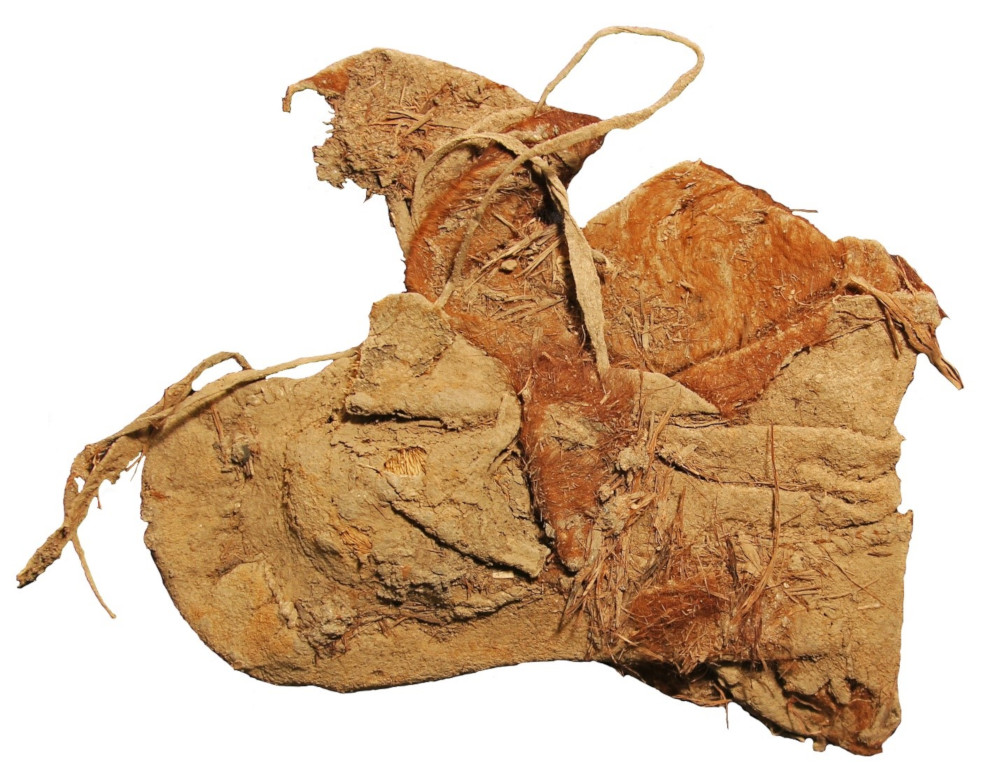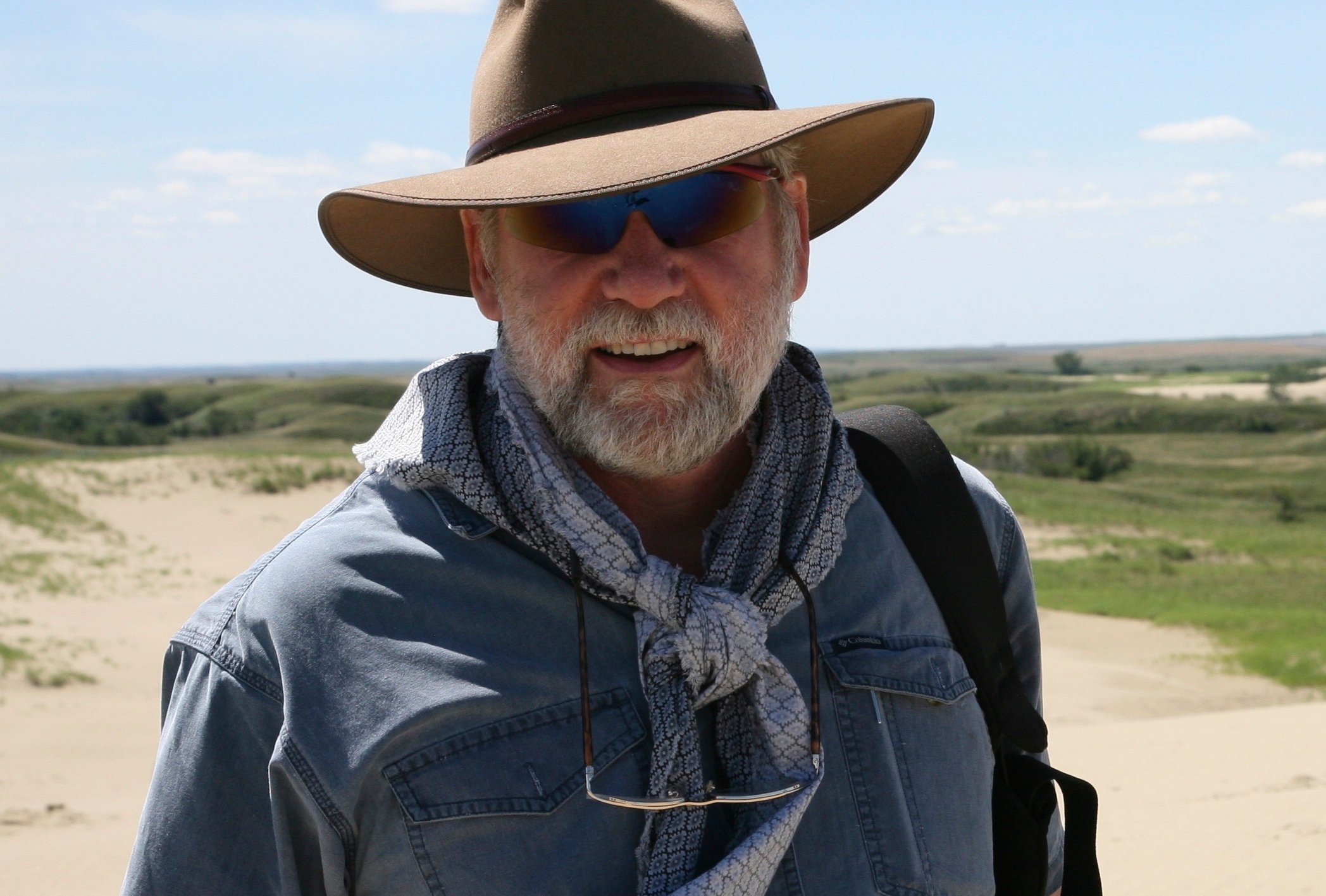A piece of leather from an 800-year-old moccasin found in a Utah cave has helped researchers retrace the ancient steps of a remarkable migration that saw some Dene (Athapaskan) people leave their homes in the continent’s Subarctic and eventually create new homes scattered across the southern United States as Dineh (Navajo) and Ndee (Apache) ancestors, according to an international research project featuring the work of University of Alberta researchers.
Previous studies of well-preserved artifacts found in the Promontory Caves on the north shore of Great Salt Lake showed that a group of highly successful hunter-gatherers made moccasin styles and other artifacts that indicate origins in the Canadian Subarctic, more than 1,500 kilometres to the north.
Jack Ives, a researcher in the Department of Anthropology, said this latest project, led out of Lakehead University by Jessica Metcalfe, reconstructed a part of the Dene migration using chemical traces in footwear showing that people from the Promontory Caves had journeyed far to the south, nearer to areas where Dineh and Ndee ancestors would make their ultimate homes.
For a decade, Ives said, researchers had been assembling a series of radiocarbon dates on items found in the cave—which includes 350 worn-out moccasins and thousands of large mammal bones—to understand when the Promontory Caves were occupied and by whom.
Bison leather offers clues to migration
Carbon dating of some of the artifacts left behind placed cave occupancy in the 13th century. And while isotopic tests on the leather of old moccasins were almost always consistent with bison that grew up in the Great Salt Lake area, there was one startling revelation: a bit of bison leather from ankle wrap on a remnant of a moccasin produced carbon-13 isotopic signatures of an animal whose diet consisted of plants found 700 to 800 kilometres to the south or southeast.

“We think this bison grew up and was killed anywhere from eastern Colorado to perhaps as far as the Texas panhandle, or alternatively, parts of northern Arizona, before someone brought it back to Promontory Cave 1,” said Ives, former director of the Institute of Prairie and Indigenous Archeology.
And while there are no set social science laws about human migration, there are regular human behaviours that involve returning to previous homeland areas and scouting out new locations.
Metcalfe and Ives believe it was most likely scouting behaviour that brought a member of that Great Salt Lake population cave south to where the ankle wrap was acquired.
“Nobody migrates someplace they've never heard of,” Ives said. “Invariably people know something about where they're intending to go.”
The team concluded that knowledge of distant locations would have ensured that these Promontory people were well prepared for relocation to a new territory when the need arose.
This research contributes to a long-standing archeological puzzle: how and when did members of the Dene language family spread from the Canadian Subarctic into the American Southwest?
Ives explained the Dene language family is the most widespread family in North America. Dene speakers live in Alaska, throughout Canada’s northwest and into British Columbia, and along the Pacific coast as far as northern California. Other Dene speakers were early ancestors of Apache and Navajo people who made their homes across what is now the southwest U.S.
What triggered the displacement of the Dene from their Subarctic home in the first place is subject to conjecture, but one of the leading theories holds that they were scattered by a massive volcanic eruption at the Alaska-Yukon border.
In fact, U of A Department of Earth and Atmospheric Sciences professors Duane Froese and Britta Jensen pinned down the time frame for that eruption to AD 846-848 thanks to ash present in the Greenland ice cores.
Ives said pushes and pulls form the basis of migration theory, with the push being the post-volcano ashen skies and landscapes, and the pull being the promise of plains bison hunting.
The “cultural vortex” of the plains
“I refer to the plains region as a cultural vortex; it was drawing people in because when people got near it, they could see, ‘Geez, we could do that.’”
It's not just the Dene people who were being caught up in processes drawing people onto the Plains. Ives said Numic speakers like the Shoshone, Comanche and Ute, as well as Cree, Nakota, Lakota, Dakota and Cheyenne, were all among many peoples who took up living on the plains from other points of origin.
“I think of how and why Dene ancestors would move farther south—it was triggered by a catastrophe of the North, but they also saw opportunities and advantages in moving farther south, in processes that could pull them onward,” said Ives.
Ives said the 13th century was turbulent. Other research has shown with tree-ring dating that there was a prolonged drought that has been pegged to 1276 to 1299—which was right about the time that the Promontory Caves were inhabited. Deteriorating conditions in the central plains made bison scarcer there, but improved conditions as far south as what is now Texas drew bison-hunting communities there.
The turbulent nature of the later 13th century, in which there was at times violence, would have made for uncertain circumstances for migrating people.
“It would have been ambiguous where you were: Are we welcome? Can we create a relationship with our neighbours?” said Ives.
“Then here are these caves that are supremely defensible.”
Safe haven in caves
Not only were the caves safe from any threat thanks to being situated on a vertical cliff face, Ives said, but there was also a pass above the caves that was perfect for big-game hunting thanks to rock formations that created natural blinds and funnelled animals to an intercept point.
In earlier U of A graduate work, researchers estimated 25 to 45 people lived in the caves for 25 to 45 years and took full advantage of this killing zone. Ives said the cave may have been the centuries-old home to about 1.7 million whole and fragmentary pieces of bone.
“Whoever was living in the caves were really good hunters,” said Ives. “It's possible they might have impacted the large game population and decided to leave for that reason.”
Ives said this research can be both emotional and important for those interested in reconnecting with the past in ways that can help with language revitalization and sustaining traditional arts like moccasin making.
“The moccasins, for instance, evoke a response in people because when we see them as having been worn by human beings, and it doesn't matter who you are, you begin to sense another person from the past,” he said.
“This is very powerful for Indigenous people.”
As well, Ives suggests there are lessons to be learned from how the southern Dene adapted as they left their Subarctic home.
“This work can be instrumental in helping us understand how people responded in the past, because these issues, such as drought, will intensify in the future,” he said.
“It's a warning, but it also tells us of the constructive things that people did in the face of challenges and how they managed their way through, because people didn't go away.
“There's a hopeful aspect of this, too.”
The research was supported by grants from the Social Sciences and Humanities Research Council of Canada.
